- Our Products
- Upper Extremity
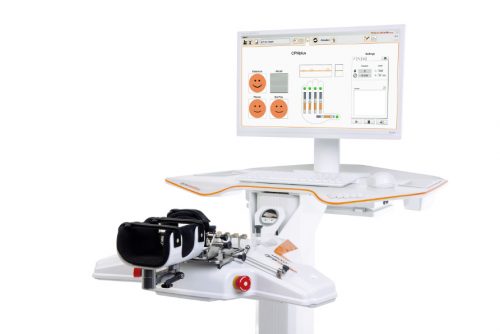 AMADEO The hand therapy world champion
AMADEO The hand therapy world champion
Boredom in finger-hand rehabilitation? Not with AMADEO! Motivation in the course of therapy is just as essential as fingers and hands are for daily life. Regardless of whether it is an adult or child, AMADEO increases therapeutic ambition with sophisticated robotics and a playful approach, and also visualizes the smallest successes in all phases of rehabilitation. Bottom line: AMADEO is simply unique.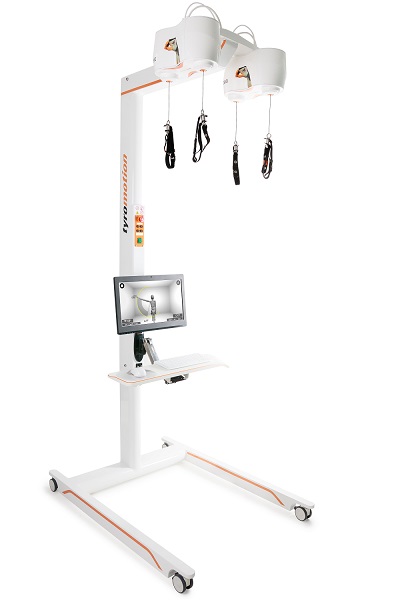 DIEGOBilaterally back to life
DIEGOBilaterally back to life
Finally go fishing again? DIEGO® skilfully assists patients with its unique intelligent weight relief. With its three-dimensional therapeutic area and virtual reality, DIEGO® enables the ideal transfer of what you have learned into everyday life – exactly with the required support. Nothing more and nothing less.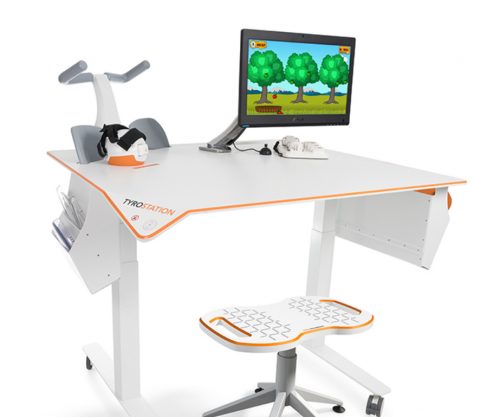 TYROSTATION Endless options, well organized
TYROSTATION Endless options, well organized
Anyone who is as versatile as PABLO® and TYMO® needs structure to really unfold. The Tyrostation is home to all individual components of our two all-rounders and also provides perfect ergonomic adaptability for every patient. MYRO Full of variety, versatility, innovation and creativity
MYRO Full of variety, versatility, innovation and creativity
Real objects, power control, touch applications and a whole lot of fun: this is what constitutes goal-oriented, intuitive therapy with MYRO. The sensor-based surface is the basis for creative therapy which brings about meaning and self-determination in daily life. PABLO As versatile as life
PABLO As versatile as life
PABLO® is an all-rounder when it comes to activities of daily living. Position sensors and numerous accessories open up incredibly versatile therapeutic options in a safe environment for patients of all impairment levels.
- Lower Extremity
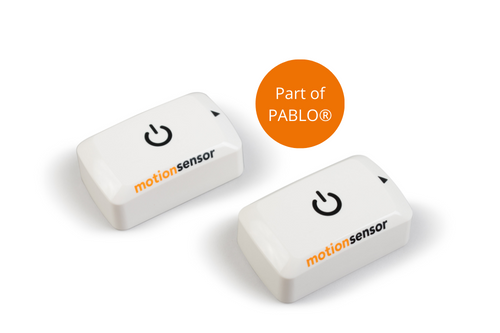 PABLO Lower ExtremityPart of PABLO®
PABLO Lower ExtremityPart of PABLO®
Always know where therapy is going
PABLO® Lower Extremity, our gait analysis and training system, precisely measures the parameters which are required for the selection of the most effective therapeutic measures for gait improvement. Simple and location-independent application as well as size-independent measurement makes the package complete – small device, great effect!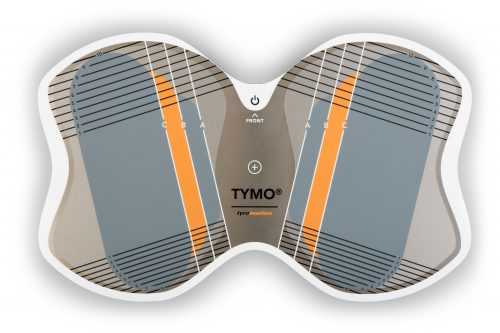 TYMO Balance in perfection
TYMO Balance in perfection
TYMO, a portable posturography system and the world’s thinnest balance platform. Flexible in application, TYMO trains postural control in a sensitive, specific and meaningful manner, and is therefore the basis of all movements. Motivation and fun are included.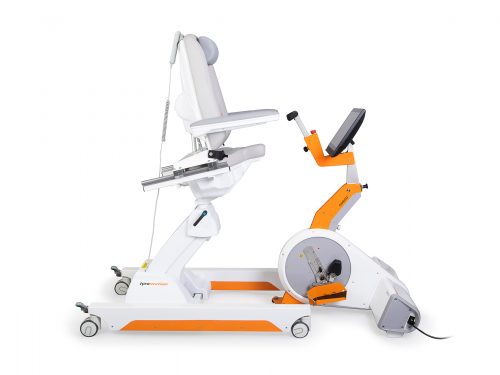 OMEGO Plus Therapy for all phases of gait rehabilitation gone motivational
OMEGO Plus Therapy for all phases of gait rehabilitation gone motivational
Two separate drives mobilize the patient in an effortless, isolated and focussed manner, and therefore make OMEGO® the long-desired stopgap between mobilization and locomotion. What else remains for patient and therapist to do? Train in a motivated manner, have fun and achieve goals. LEXOGait training at its best
LEXOGait training at its best
Maximum number of steps and intensity, low in height, easy handling and fast setup time: Impossible? It works! With LEXO® patients take the first impressive steps back to mobility and enjoy the feeling that things are finally getting better again.
- MTT-Line
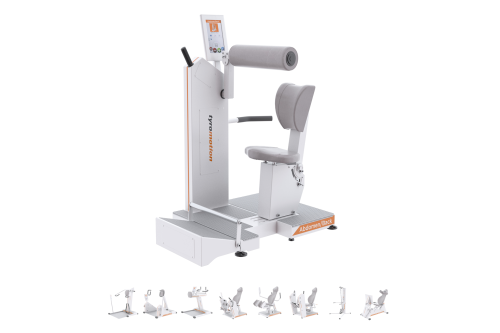 MTT-Line Medical training therapy
MTT-Line Medical training therapy
The barrier-free MTT-LINE specifically strengthens the six major muscle groups of the human body.
- Software
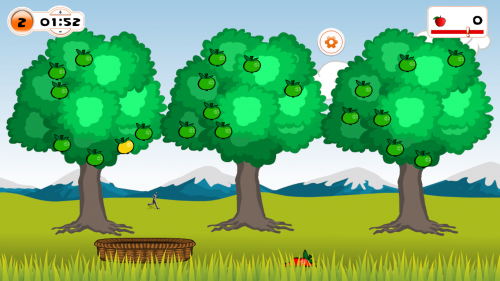 TyroS The heart of our technology
TyroS The heart of our technology
Our TyroS software – developed by and together with therapists – is the heart of our technology that combines devices, know-how and therapeutic games. It is a sophisticated therapeutic system that helps challenge and encourage patients.
- Upper Extremity
Health
Animals in therapy? – Dogs, cats, and other animals can contribute to therapy success
24. January 2023 ● 5 min. Reading time
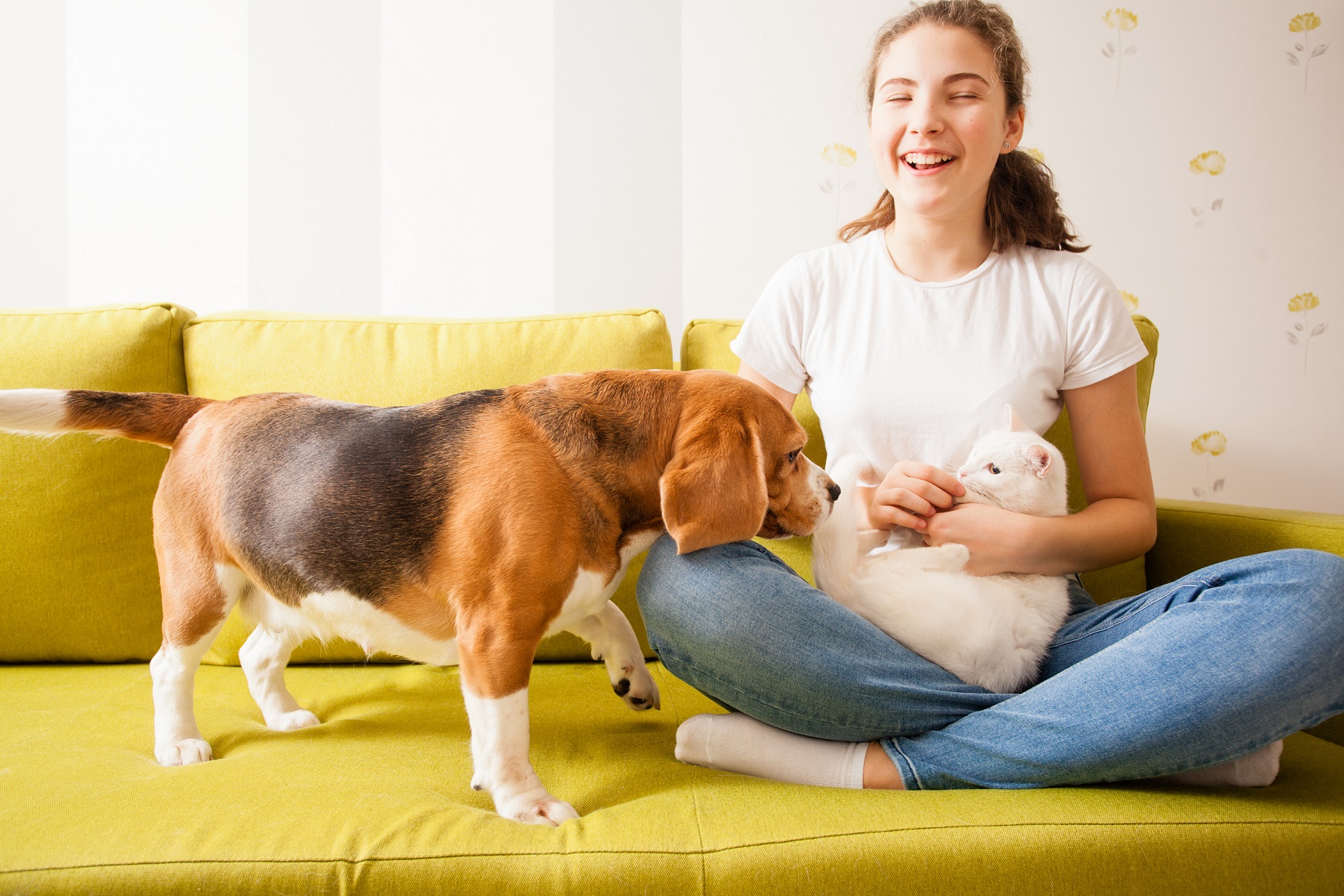
What is animal-assisted therapy?
The relationship between humans and animals is the central aspect of animal-assisted therapy. Animals positively impact mental health and the social, emotional, and cognitive development of children, adolescents, and adults.
Animals can support therapy for a wide range of conditions and issues. These include pain management for chronic conditions, assistance with physical limitations, long-term or nursing home care, as well as depression, dementia, autism, other psychological issues, developmental disorders, and post-traumatic stress disorders (PTSD).
Working with animals uses the “one health” approach: The well-being of humans and animals are immediately linked to one another. Lasting positive effects can only be achieved when the well-being of both the animal and the human are considered.
Various types of animals can be used in therapy. Both pets and farm animals are options. Common support animals are rabbits, guinea pigs, and dogs. Farm animals such as goats, donkeys, horses, and lamas have also been successfully introduced as support animals.
Animal-assisted intervention is distinguished by a therapeutic, educational, and/or social purpose:
- Animal-assisted therapy
Trained therapists, including OTs, PTs, speech therapists, psychologists, social therapists, and doctors, can use animals in therapy. The animal supports the selected treatment method, such as in animal-assisted physiotherapy, to improve physical, cognitive, behavioral and/or socio-emotional capabilities through therapy.
- Animal-assisted education
The basis of animal-assisted education are educational methods. Trained teaching staff (general and special needs education) use animals to promote academic goals or to improve social skills and cognitive functions.
- Animal-assisted activities
Animal-assisted activities can take place without a specially trained therapist or educator/teacher. The main goal is to promote motivation, relaxation, and rejuvenation. Additionally, instructional and educational goals may play a role.
What effect do animals have on therapy?
Social effects
The presence of animals stimulates social interaction. The so-called “social catalyst effect” describes how the presence of an animal will make therapists or doctors seem more trustworthy, which can be beneficial for therapy.
Psychological effects
The presence of an animal reduces anxieties, especially before and during stress-inducing situations. Contact with animals improves the ability to concentrate, promotes motivation, and diminishes symptoms of depression. This is why animals are used frequently in the therapy of chronic diseases, rehabilitation, or psychotherapy.
Neurobiological effects
The interaction between a human and an animal has a suppressing influence on the human stress system. It lowers the stress hormone cortisol and reduces blood pressure and heart rate.
Chronic diseases or severe health events can put the body in a state of permanent stress. Body and mind are virtually trapped in a stress spiral. Animals can provide relief from this stress reaction, at least for a short period of time, promoting recovery and rejuvenation.
How does animal-assisted therapy work?
Various concepts offer explanations as to how animal-assisted therapy works:
- Attachment studies
Physical contact, be it with another human being or an animal, releases the “cuddle hormone” oxytocin. Activating oxytocin results in experiencing satisfaction, well-being and relaxation, promoting rejuvenation and recovery.
Petting, caring for or playing with an animal triggers a global attachment reaction. This makes the person more open, trusting, and outgoing, which can benefit the therapy progress.
- Biophilia
Biophilia describes the relationship between humans and nature or life. Severing this fundamental relationship can result in illness and unhappiness.
Animal-assisted interventions allow the individual to re-discover and re-connect with nature. It also triggers the so-called biophilia effect: Animal behavior directly impacts humans. Calm animals communicate a sense of relaxation and security to humans.
- Humanistic Psychology
Humanistic psychology assumes that every being has a desire to grow and develop, the so-called self-actualizing tendency.
Three basic elements are required to promote self-actualizing tendency:
- Unconditional positive regard
- Empathy: being able to relate to someone else’s situation
- Congruence: Maintaining validity, truth, and openness
Animals meet all three elements needed to promote self-actualizing tendencies. This creates a growth-inducing atmosphere with considerable potential for change in therapy.
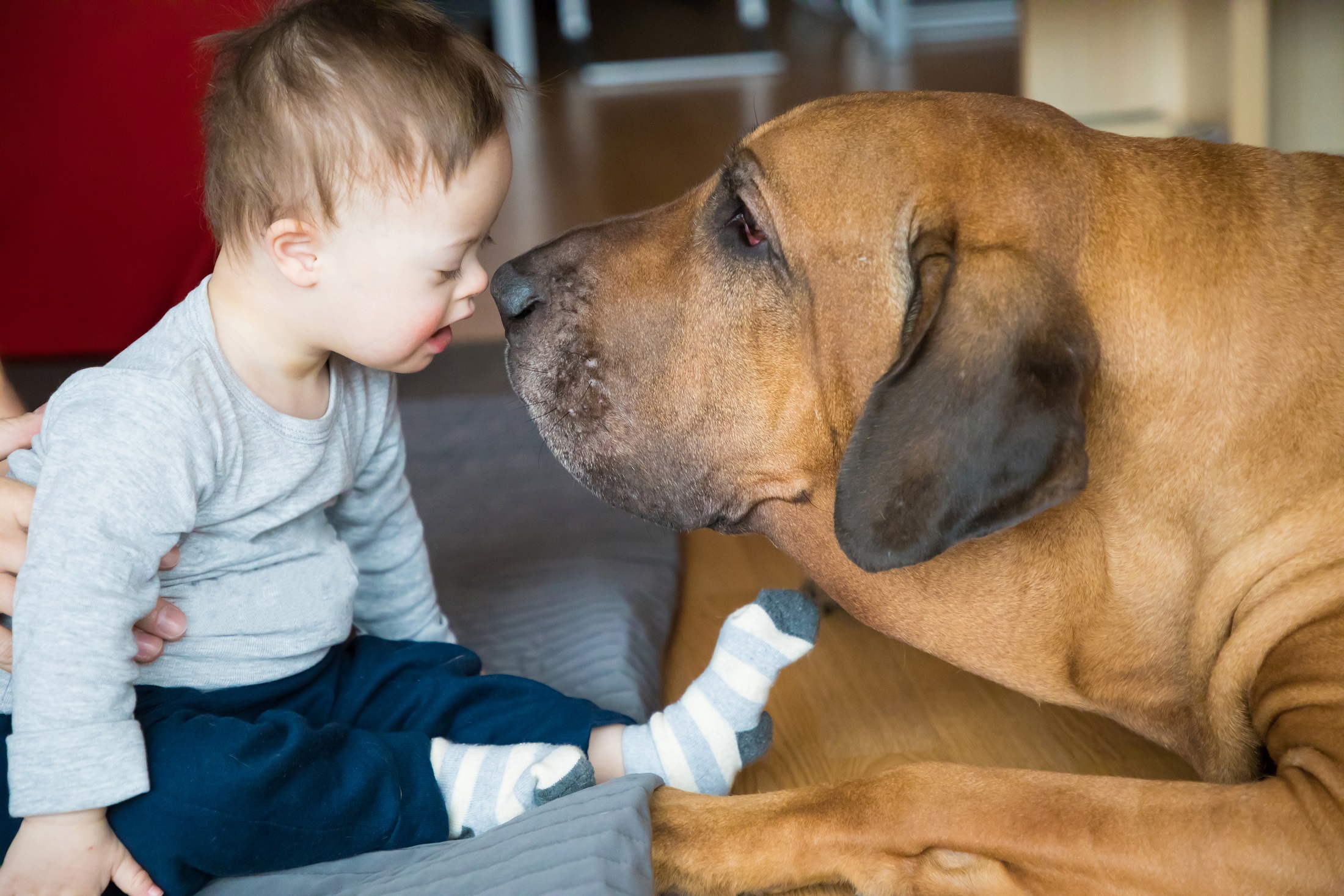
Dogs in therapy
Dogs are particularly popular therapy animals. Dogs are unbiased, free from prejudices and honest. They bring variety into everyday life and promote contact and physical proximity. This means that they can offer support in a wide range of therapies.
- Therapy-assistance dog / visiting dog / on-ward dog
Therapy-assistance dogs are integrated into an existing therapy. This can be done in both individual and group therapy sessions.
Visiting dogs promote mobility in stationary settings, offer a conversation topic, and help form relationships.
On-ward dogs live in an institution or belong to employees who bring them along. Only very few dogs are up to this “full-time job”.
- School dog / presence dogs / visiting school dog
A school or presence dog is taken into a class for a defined period of time by teaching staff. They support social coherence within the class, the relationships between students and teachers, and the social skills of the individual students.
Visiting school dogs are introduced to the class once or at irregular intervals. The main goal is age-appropriate learning about dogs.
Author: Saskia Wibner
Sources:
Julius, Beetz, Kotrschal, Turner, Unväs-Moberg (2014) : Bindung zu Tieren. Psychologische und neurobiologische Grundlagen tiergestützter Interventionen. Hogrefe-Verlag
Prothmann A. (2008) : Tiergestützte Therapie – Medizin mit Streichelfaktor?. Karl F. Haug Verlag in MVS Medizinverlage Stuttgart GmbH & Co. KG
Beetz A. : Tiere in der Therapie – Wissenschaftliche Grundlagen. Handout zur Einführung
in die Weiterbildung Tiergestützte Pädagogik und Therapie
Animal assisted therapy: systematic review of literature, 2019
You might also be interested in
4. April 2023
Health
Rehabilitation
Stroke nutrition guidelines for optimal health
Nutrition as the key part in health and well-being of stroke survivors A healthy, balanced …
21. March 2023
Rehabilitation
Kinesio taping in neurology as a useful therapy supplement
The Kinesio tape and its usefulness in neurological therapy What was originally known only from …
7. March 2023
Rehabilitation
Exercises against freezing of gait in Parkinson’s disease
When the legs freeze – how does the symptom “Freezing of Gait” manifest itself? Parkinson’s …








